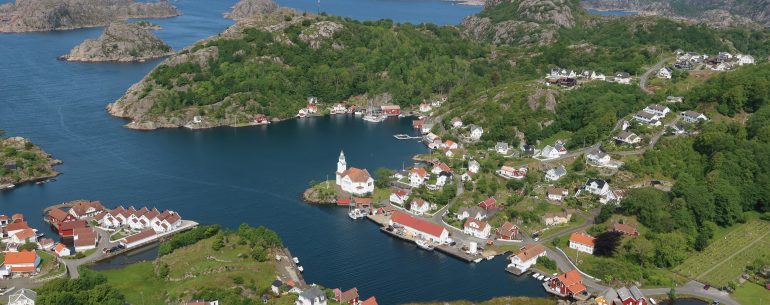We had a rest day in Kirkehamn, partly because we figured this would be nice (it is a beautiful spot) but just as much because the weather imposed it on us. Strong northwesterlies, when you want to go northwest are no fun. So I decided to trek (well walk anyway) up the hill we have been staring at from the cockpit – Hågåsen. The walk is a passage through time as during the German occupation of Norway this was part of the Atlantic Wall fortifications – some 300 German coastal fortresses to defend occupied Europe. This battery was established in 1941 and was to control the sea west of Lista along with the access to the Flekkefjord.
The first thing you come across as you walk up is the soldier’s mess. I guess this is hardly surprising as they would have had the longest walk to work – the Commandant’s House and Officer’s accommodation was further up (and in some cases back in the centre of the village!). Most of the construction work was carried out by Norwegians and they had four 10.5cm field cannons along with anti-aircraft armaments. Around 150 soldiers were stationed here. The remains are still clearly visible and well marked.
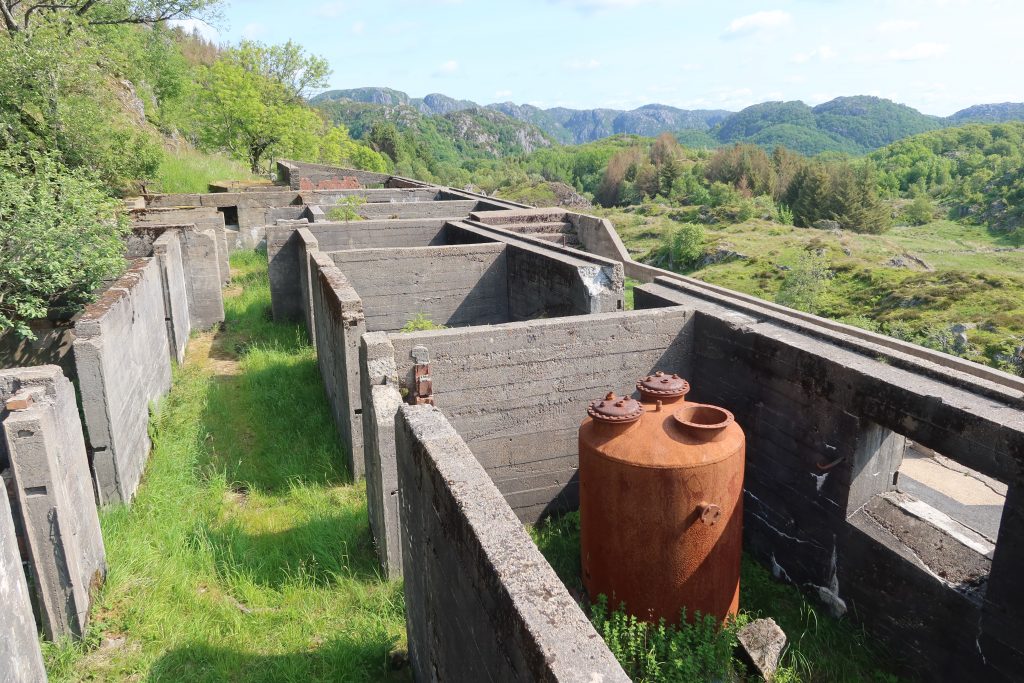
Landowners were allowed to enter the area to graze their cattle and one of the farmers was a member of the secret resistance group called the XU. He managed to take photos of the area and pass them on to Allied High Command in London.
On the way, in a complete contrast to the remains of the German fortifications, is an art installation. This, however, is an art installation you can stay in. The art installation is called “Små hytter” (small cabins)and consists of two cabins, the pink “Nyperosa” (Rosehip Pink) and the blue “Havsula” (Northern Gannet).
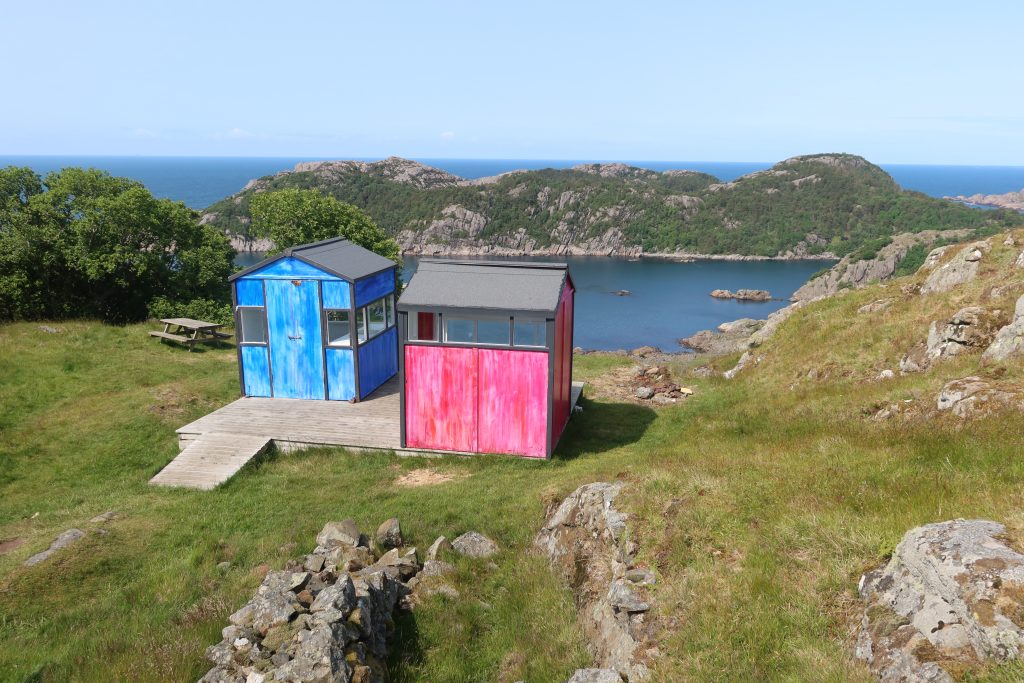
Alternatively, there is a small cabin which you can also book to stay in with a fantastic view of the harbour.

Shortly after the cabin is the final ascent to the top of the hill. Once I had got that far, I couldn’t give up, so I slowly plodded my way to the top. The view from the top is even better, though a short rest at the top seemed fair. Just to prove I made it I even roped a poor German family into taking a picture of me!
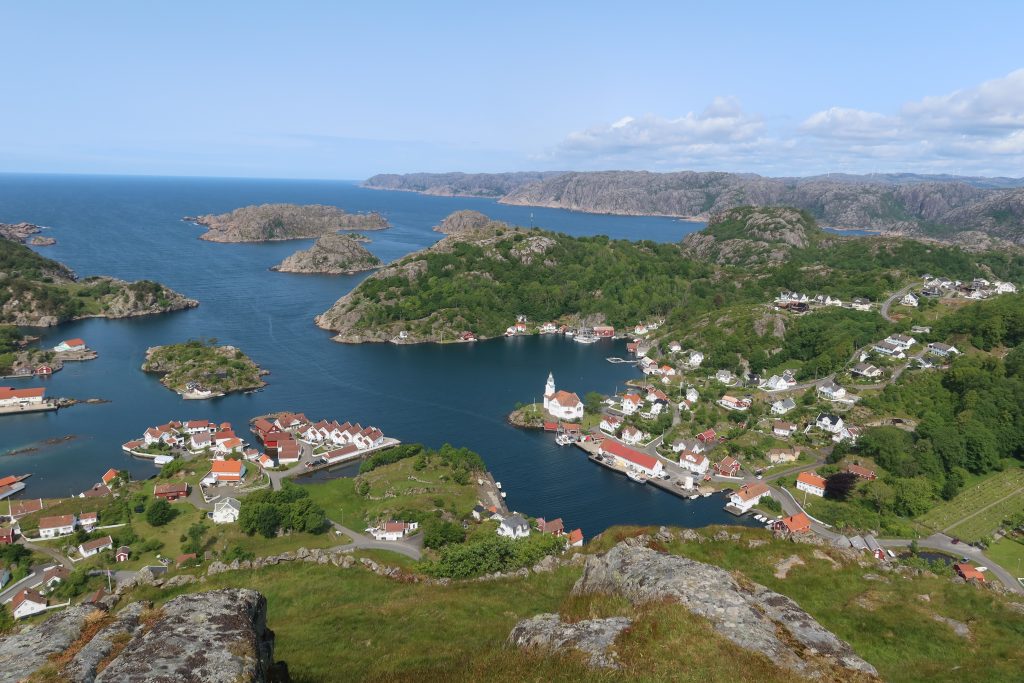

In the afternoon the crew on Aloucia had managed to find a sauna on the other side of the harbour. This just fitted eight of us in what was a perfect example of Scandinavian design – a lighthouse posing as a sauna!
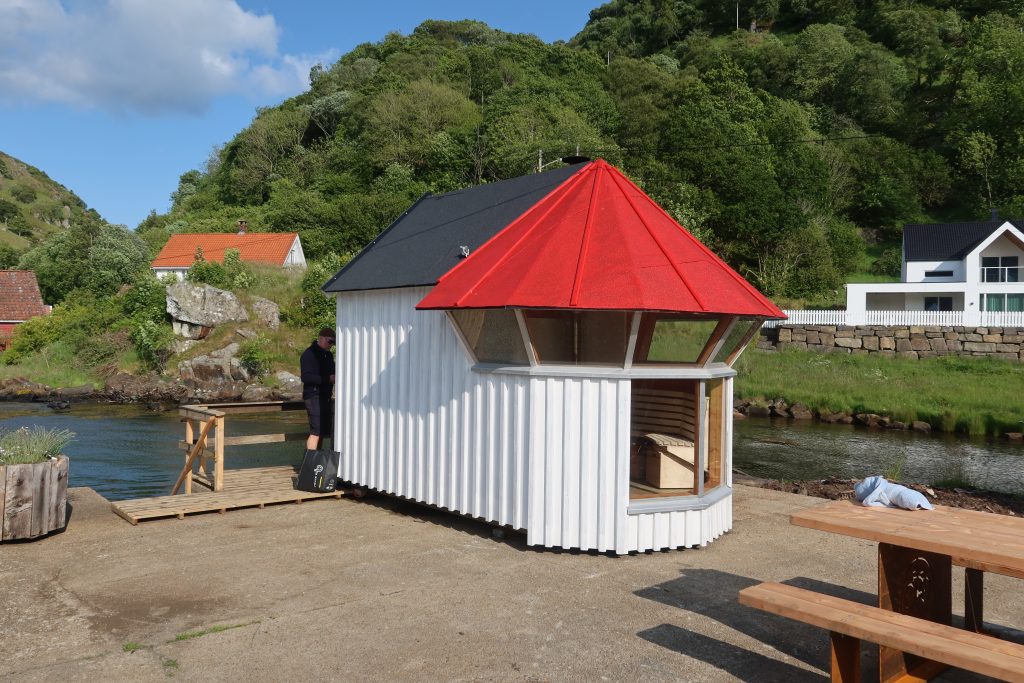
The dip in the water every so often was very refreshing with the cold making me temporarily forget that we had spotted lots of Lions Mane jellyfish close to the boat in the harbour. The lion’s mane jellyfish (Cyanea capillata) is apparently one of the largest known species of jellyfish and has eight lobes, giving it a star-like appearance. It likes the cold, boreal waters of the Arctic and North Atlantic and also apparently very common as far south as the Kattegat and Øresund. It can sometimes be found in the southwestern part of the Baltic Sea but this is usually because it has drifted there. In an evolutionary sense that isn’t a good plan as it can’t breed there because of the low salinity. The name comes from the tentacles which are very fine and resemble a lion’s mane. These tentacles may be as long as 30m or more giving it the reputation of being the longest animal in the world, though this is a somewhat disputed title!

In the evening we shared fresh scallops with the Danish boat moored next door to us. The scallops had been given to us by local divers who had caught them the previous day.
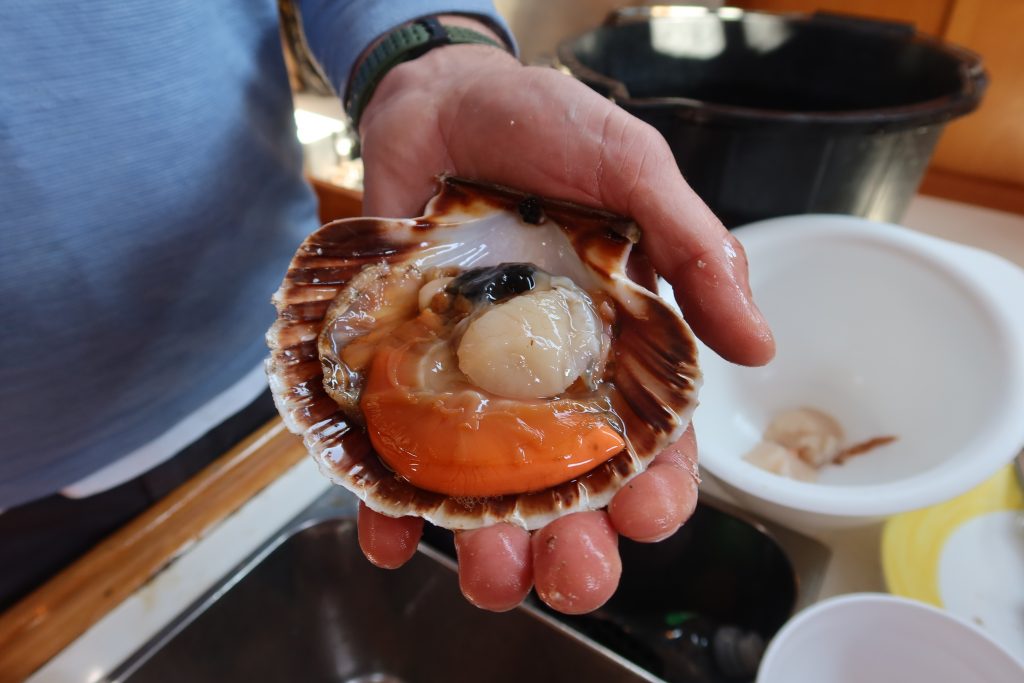
The next day we headed off again first thing in the morning. This time we took the wider exit through to the west and then headed up the coast. The first inlet we headed past is called the Jøssingfjord. This is the site of a famous (or infamous) incident called the Altmark Incident. This took place in February 1940 – part of what was termed the Phoney War. This was the period at the start of WWII when there wasn’t a great deal of fighting and at this stage Norway was still neutral. The Altmark was a German tanker and she was carrying (secretly) around 300 Allied prisoners who had been captured when the ships they were on had been sunk by the pocket battleship Graf Spee in the Southern Atlantic. They were being transported back to Germany on the tanker when it was spotted off Egersund. The Norwegian authorities were asked to inspect the tanker three times, but after a cursory inspection each time reported there was no-one on board(despite the prisoners trying to make themselves heard). The Altmark was then intercepted by HMS Cossack and she headed off into the Jøssingfjord. Given that it is a short fjord, there was nowhere for her to hide and the Cossack followed her in the next day and boarded her. After a short skirmish with hand-to-hand fighting, during which seven German sailors were killed, the prisoners were freed and then taken home on HMS Cossack. It is said, though it is almost certainly an urban myth, that this was the last battle where cutlasses were used, but it is more likely that it was bayonets. The German sailors are buried in the cemetery at the end of the fjord.
For most of the trip we managed to sail with essentially light winds, but it was a lovely trip and we moored in Egersund early afternoon.
